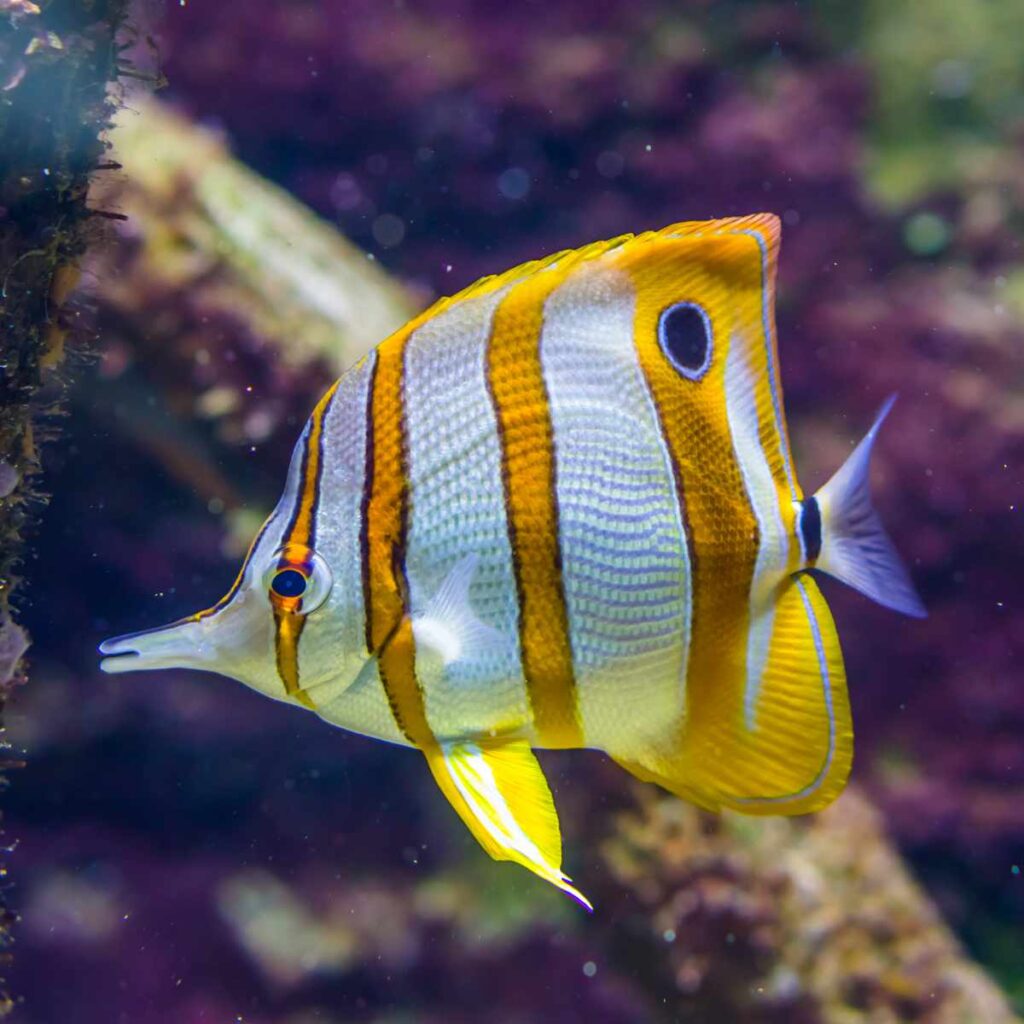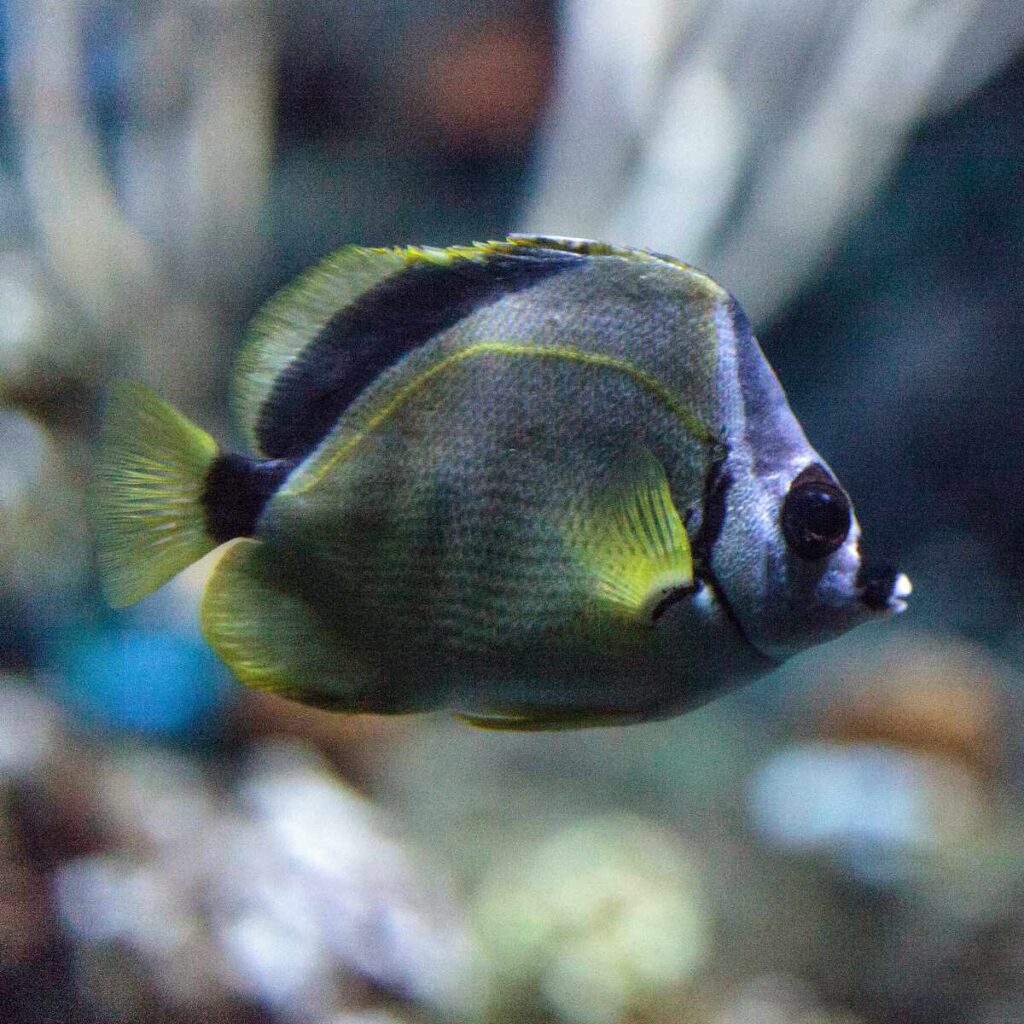Last Reviewed and Updated on January 22, 2023
Butterflyfish are a diverse group of marine fish known for their bright colors and striking patterns. These tropical fish are found in coral reefs and lagoons around the world, mainly on the reefs of the Atlantic, Indian, and Pacific Oceans. They are a popular choice among aquarium enthusiasts. Read on and learn some fun facts about the butterflyfish.

About Butterflyfish
Butterflyfish is a common name for about 130 species of fish in the family Chaetodontidae, with new species being discovered relatively often.
They resemble angelfish but are smaller and lack preopercle (series of bones) spines at the gill covers.
Most butterflyfish species range from 4.7 to 8.7 inches / 12 to 22 cm in length.
As their common name suggests, these fish are brightly colored and often have striking patterns. Some species, though, are also dull in color.
All butterflyfish have laterally narrow bodies and are easily spotted. Their dorsal fins are uninterrupted, and their tails are never forked.
Most species feed on coral polyps and sea anemones.
They are pelagic spawners, meaning that they release eggs into the water, and the eggs flow with the water currents until they are spawned.
Facts About the Butterflyfish
Now you know all the basics about these colorful fish. It’s time to dive deep into some of the most interesting facts about butterflyfish.
1. Many are monogamous
Adult butterflyfish are often seen in pairs (female and male), which may suggest they are monogamous. This may not be true for all species of butterflyfish, but it was observed in many species where the pair stayed together for more than one season. For example, the oval butterflyfish (Chaetodon lunulatus) forms strong pair bonding, and there are reports of individuals that were paired for at least seven years.
2. The coloration of butterflyfish can vary greatly
With about 130 species swimming around in the oceans and fish tanks, there is room for a lot of variety, both in color and patterns. The most common colors include yellow, black, orange, and white, and the most common pattern are stripes or a dot.
3. The freshwater butterflyfish isn’t related to butterflyfish
Freshwater butterflyfish (African butterflyfish) is a freshwater fish. Although its name suggests it is one of the butterflyfish species, it is not closely related to them.
All butterflyfish are saltwater fish.
4. Some change colors at night
Butterfly fish are active during the day; at night, they hide in coral reef crevices, and their color changes.
5. They are well-equipped to escape predators
Their vivid coloration may make them easy to spot – although their vertically narrow bodies also hide them well. The color of their bodies, specifically the patterns, helps these fishes when predators attack them.
When attacked, their first instinct is to flee. When attacking, a predator usually aims for the head of the fish (the eyes). Many butterflyfish have their eyes hidden or even have a pair of large black and white spots on the back that confuse predators into thinking their head is on their backs.

6. Hybrid butterflyfishes occur in nature
Hybrids (like ligers) are crosses between two species and aren’t commonly seen in nature. Butterflyfish hybrids, on the other hand, aren’t as rare. A specific species of butterflyfish may mate with another butterflyfish species, resulting in hybrids. As this isn’t rare with these species, it gives researchers an excellent chance to study hybridization.
In contrast to terrestrial (land) hybrids, butterflyfish hybrids are fertile (source)
7. Blacknosed butterflyfish runs a cleaning station

The black nosed butterflyfish (Johnrandallia nigrirostris) sometimes acts as a cleaner fish. This fish will remain at these designated cleaning stations, where fish infested with various crustaceans (and such) come to have them removed.
8. Many butterflyfish are obligate corallivorous eaters
Some species have diverse diets, but many are strongly, if not exclusively, dependent on corals as their food source.
9. They are not hunted for food by humans
They are safe for consumption but aren’t hunted for food. Some species are, however, collected for the aquarium trade.
10. The lined and the saddle butterflyfish are the largest of them all

The lined butterflyfish (Chaetodon lineolatus) and the saddle butterflyfish (Chaetodon ephippium) are the largest butterflyfishes. These two species may grow up to be 12 inches / 30 centimeters long.
